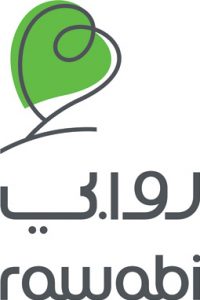Courtesy of Rawabi Municipality
Palestine, home of the world’s oldest continuously inhabited city of Jericho, proudly stands today on the global stage as the home of one of the newest inhabited cities in the world – the city of Rawabi. As a concept courageously unfolding before our eyes, Rawabi is first identified by its key characteristic as a planned city established in 2009 by Palestinian visionary Bashar Masri. The reality of planned cities is not new for Palestine. While many Palestinian cities have grown and expanded on their own, Rawabi, in its design, has continued a legacy of Palestinian planned cities that started with the ancient cities of Jericho and Jerusalem. With a modern and environmentally sustainable twist, Rawabi reveals a tangible continuity with the planning and design of previous Palestinian planned cities. Residential neighborhoods emulate traditional Palestinian neighborhoods, allowing residents to carry on the heritage of the Palestinian lifestyle. These neighborhoods are planned to remain residential, giving their inhabitants a space to retreat from the cacophony of the streets and the masses in the market. The QCenter, however, which is located in the heart of Rawabi, is reminiscent of the old cities of Jerusalem and Nablus as a pedestrian-only, one-stop-shopping and leisure experience open to everyone visiting the city.
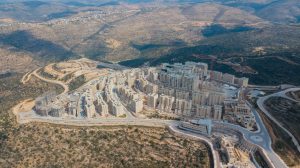
Rawabi Municipality has a clear vision for the city as a “pioneering city that is economically, socially, and technologically both attractive and sustainable. The city will continue to build on a foundation of renovation and innovation, with a focus on quality of life and service.” This slogan, articulated as part of a development plan that extends to the year 2030, represents not only a vision for the future of the city but also a cornerstone that guides the municipality’s everyday practices.
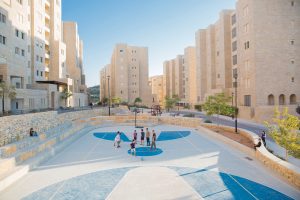
Rawabi Municipal Council was established in 2013 with the appointment of eleven members from the Palestinian public and private sectors, civil society, academia, and legal and regulatory agencies. In 2017, Rawabi’s Homeowners Association elected 11 municipal council members led by Rawabi Mayor Ibrahim Natour, an engineer involved in the construction of the city since its inception. This municipal council, the first in Palestine to govern a planned city, has a vision to develop a happy, sustainable city through maintaining complete transparency with its residents. The municipality seeks to promote a democratic lifestyle in the city and plays an active role in ensuring that its citizens are heard directly by both the municipality and the city’s Homeowners Association. In addition, the municipality plays a key role in creating a positive city culture that will foster a healthy and vibrant lifestyle among citizens.
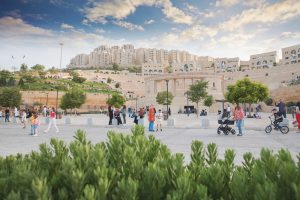
A walk through the city’s residential neighborhoods reveals Rawabi’s pride – the absence of any litter whatsoever. A key factor in this remarkable achievement, as identified by Mayor Natour, is the Rawabi English Academy. The proximity of the school to the residential neighborhoods as well as to the municipality itself creates a sense of shared responsibility as well as a crucial link between the city and students residing in neighboring Palestinian villages and cities. In addition, the municipality offers a unique perspective on the lifestyle it is attempting to create in Rawabi – a lifestyle founded on the interaction between the personal element created by residents and the surrounding environment. Rawabi Municipality considers this a priority, which is evident in the quality of services and spaces available to its residents. Between neighborhoods, we see playgrounds for children, park benches, and sporting equipment publicly available for everyone. These small amenities create a strong sense of belonging and a unique community lifestyle. Most importantly, the municipality views its role in promoting environmental sustainability in the city and within the wider Palestinian community as a crucial element in both its planning and everyday practice.
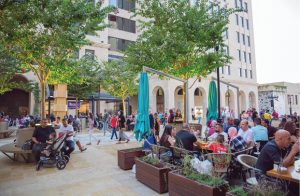
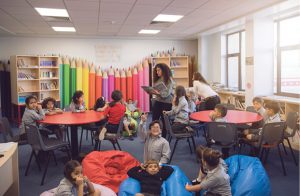
Rawabi prides itself on being a modern, intelligent city where the vision of environmental sustainability is not only practiced every day but also engrained into the design of the city itself. Rawabi Park is a prime example of the city’s efforts to curb its environmental impact while upholding its vision of providing residents and visitors with exceptional services and quality of life. When faced with the question of where to dump the one million cubic meters of material excavation waste that resulted from the development of the city, its architects and engineers saw an opportunity to challenge the norm and go beyond traditional solutions. Construction residue and excavated material were transferred and laid as a base 90 meters beneath Rawabi’s amphitheater and its surrounding park – a resourceful solution that curtailed the environmental impact of construction on the city and its residents, as well as on the rest of Palestine. This approach transformed potentially harmful waste into an environmentally responsible solution that created a space for leisure and recreation for all visitors to the city. Rawabi’s position as a planned Palestinian city allowed its vision of environmental sustainability to be embedded into the planning and implementation of the city’s modern infrastructure. Smart fiber optics built in beneath the city provide its residents with a fast and reliable telecommunication and internet network without compromising the aesthetic of residential neighborhoods. In addition, the city is equipped with a closed water network, a solar water heating system that uses solar panels, and a drip irrigation system that delivers recycled water from Rawabi’s own wastewater treatment center to every plant in the city. Such unique solutions signify Rawabi’s resolve not only to play an active role in the global effort to address environmental challenges but also to promote and nurture a culture of green practices in Palestinian society.
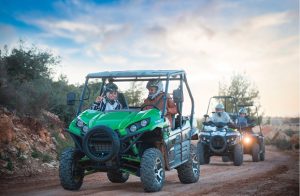
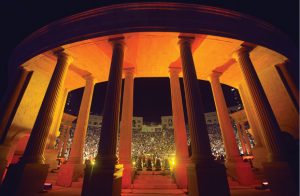
The city’s municipal boundaries encompass 6,300,000 square meters of land. Within its 22 planned neighborhoods, 4 are fully functional today, with expedited construction of the fifth neighborhood, Ikshaf, due to the high demand for housing in Rawabi. The city contains more than 6,000 housing units for 25,000 residents. In the municipal council’s development plan, the city aims to reach a population of 40,000 as well as provide around 12,000 employment opportunities both for residents and the greater Palestinian community. As the largest private-sector project in Palestinian history, the city aims not only to be a model for modern and sustainable economic growth in Palestine but also to promote a culture of democracy and transparency between Palestinian municipalities and their citizens.
Rawabi, led by its municipal council, is both a planned and a planning city. It has raised municipal standards and undertaken a responsibility towards its citizens and the larger Palestinian society to create an alternative lifestyle that remains authentically Palestinian – by its citizens and for its citizens.

